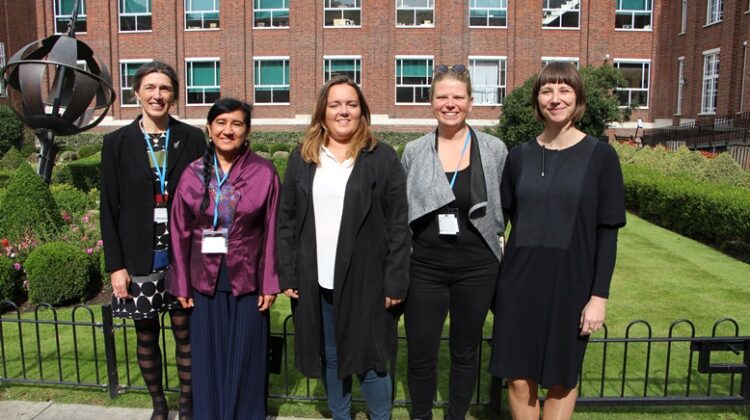
Innovative Learning Environments, or ILEs, is a concept that keeps popping up and within the realm of school architecture debates are taking place and research is being conducted on open vs closed, agile, flexible or dynamic. Outsiders may find it difficult to keep up, and as for us in acoustics, we know that we’re in for a challenge when these terms pop up in a brief. That’s why we decided to ask five of the experts at the ILETC Transitions seminar in London to explain a bit more about ILEs.
- Mariagrazia Marcarini, PhD researcher and trained teacher, Bergamo University, Italy Follow @MariMarcarini
- Karolina Szynalska, PhD candidate and trained architect, University of Cambridge, UK Follow @KSzynalska
- Silvia Sasot Ibanez, Architect and researcher, Ramon Llull University, Spain Follow @silsasot
- Mie Guldbaek Broens, trained teacher and Educational Anthropologist, LOOP.bz, the Netherlands Follow @LOOPbz
- Siv Stavem, School Planner and PhD researcher, Norconsult AS/ Oslo University, Norway Follow @123sista
First things first, what in the world is an ILE?
As it turns out, not even the research community agrees completely on what is to be considered an ILE. The consensus seems, however, to be that these environments allow an opportunity for a variety of teaching and learning activities, with different group sizes; an aspiration to do things better, simply put.
Italian researcher Mariagrazia Marcarini is a bit more practical in her description;
“The learning environments should not be noisy, but green with a didactic vegetable garden outside and a ‘living museum’ with terrarium, aquarium and farmyard animals and have proper lighting, adequate temperature, enough space and – very important – without architectural barriers to allow the students with disabilities or impairments to reach every corner of the school. The students and teachers should feel well and be as comfortable as in their own home.”
Mie Guldbaek Broens, Educational Anthropologist and former teacher, doesn’t think ILEs are a fad:
“Schools take care of society’s most important tasks, to give intellectual, ethical and social training to children so they can be a part of, and hopefully develop, society and take care of themselves. Society is constantly changing and if schools keep trying to educate in traditional cellular classrooms they will not be able to live up to this task.”
Innovation – a source of frustration
Education is not the only industry talking about innovation. Clearly, preparing students for that reality is something that the job market and society require but how innovative are today’s schools? Judging from the countries we asked the experts about, it seems as though it’s only Norway that tends to build more open and flexible learning spaces right now. However, Mariagrazia mentioned that Italy has a couple of schools with innovative learning environments and that the Ministry of Education has launched a large project including 51 new schools that aim to start with didactics and pedagogy and may result in more innovative learning environments. This seems like the start of a new trend.
Karolina Szynalska is born in Poland but based in the UK now and says that England had an opportunity to create many innovative learning environments through the Building Schools for the Future programme (2005-2010):
“Many of them are ‘innovative’ architecturally, but not, frustratingly, pedagogically.”
Another type of frustration seems to come from Spain, where architect and researcher Silvia Sasot says that schools are slowly starting to change but “government regulations promote the traditional classroom concept.”
In some cases though, perhaps we can’t see the wood for all the trees as Mie quite rightly points out that:
“The physical environment in most schools is an unnecessary restraint for the teachers and leadership to develop their pedagogy and organisation.”
Knowing how to use the space – the secret sauce in making ILEs work
So this begs the question, what’s the secret sauce in making ILEs the success we need them to become?
Whilst freedom, team working, comfort, even good acoustics are all mentioned, the one theme that comes across is the handover stage of a project. School Planner and researcher Siv Stavem from Norway put it like this:
“Competence in using the learning spaces is absolutely crucial. We see that teachers do not know how to use them. You can’t teach against the room’s limitations – arranging discussion groups in an auditorium would not make sense, and likewise, giving lectures in an open space would not work.”
Like all good cooking, it’s about finding key ingredients or flavours that go together and enhance each other. When it comes to ILEs it seems as though paying extra attention to the handover stage, making sure that teachers are aware of how to work with the room, will elevate the project from being a bland microwave dinner to becoming a Michelin star degustation.
In the second and last part of this expert series, we ask the experts a bit more about their view on acoustics related to the country they work in and try to find common ground.

